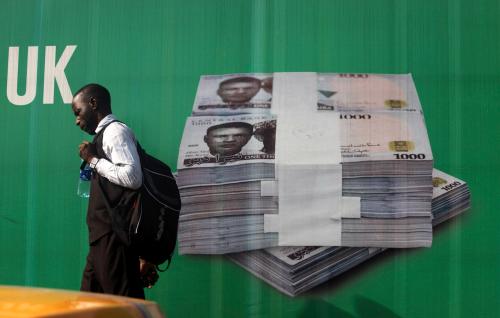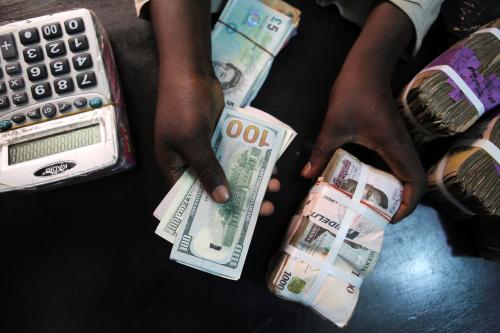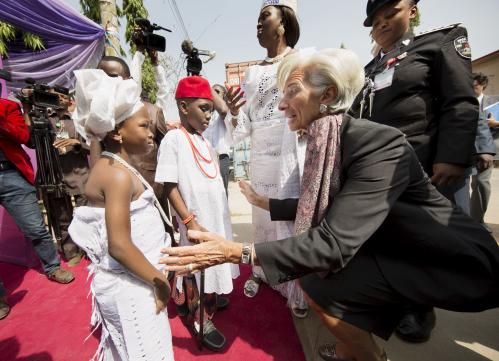Nigeria allows the naira to devalue
On Wednesday, the Nigerian Central Bank announced its plans to abandon the currency peg, thus allowing the naira to float freely. Since March 2015, the currency had been pegged at 197 naira to the dollar while it traded for 370 naira per dollar on the black market. For several months, the central bank had been under pressure to devalue the naira or abandon the peg, with the latter eventually leading to the former. The decline in commodity prices—coupled with the declining oil input caused by the attacks in the Niger Delta—is making Nigeria face its worst economic crisis in years. The International Monetary Fund’s Regional Economic Outlook predicts that Nigeria’s economy will contract by 0.4 percent in 2016, after suffering from a -0.1 percent growth rate in 2015.
The markets had a favorable reaction to the announcement, with the shares on the Nigerian stock market gaining $1.5 billion in value. In the long term, the weak currency could attract investors, who had been holding back as they feared devaluation. However, in the short term, with the weak naira, Nigerian imports will become more expensive, which could in turn lead to inflation. Analysts project an imminent increase in the interest rate in order to counter the inflation.
Mozambique’s currency takes a deeper dive
Wednesday, the Mozambican metical further devaluated, dropping to a record low of 66 metical against the dollar, a 10 percent decline. After the Angolan kwacha, the metical is Africa’s second-worst performing currency this year. The decline reflects the skepticism expressed by the IMF team currently in mission in Mozambique evaluating the country’s current economic climate. Mozambican Prime Minister Carlos Agostinho do Rosario stated that the team is assessing the macroeconomic impact of Mozambique’s large public debt. The visit also serves as the first step in mending the broken relationship between Mozambique and its development partners, which deteriorated when Mozambique failed to disclose the existence of a large amount of public debt, with a value exceeding $2 billion.
The weakened metical is projected to further boost inflation, which currently lies at 18 percent. This week, in an attempt to control inflation, the Bank of Mozambique announced that the benchmark policy rate would increase by 150 basis points to 14.25 percent. This is the sixth rate hike the central bank implemented since October 2015.
The European Union signs an Economic Partnership Agreement with Southern African Development Community members
This week, six of the 15 members of the Southern African Development Community (SADC) (Botswana, Lesotho, Mozambique, Namibia, Swaziland, and South Africa) and a European Union (EU) delegation met in Botswana to sign an Economic Partnership Agreement (EPA). SADC is not the first region to sign an EPA—the East African Community signed one in 2014.
The deal’s provisions include an asymmetric trade opening in which there is 100 percent free access to the EU market for those select African countries (South Africa gets 98.7 percent), but Southern African Customs Union (SACU) countries remove customs duties on 86 percent of imports from the EU and Mozambique, 74 percent. It also includes “flexible rules of origin,” which will promote regional value chains because it allows for inputs to come from neighboring countries. For the full list of provisions, see here.
Not all is perfect, though: With the threat of the Brexit looming, there are some uncertainties. For example, if the United Kingdom were to leave the EU, the U.K. would no longer be a part of the agreement. In addition, many critics state that the EPAs are unequal in the favor of the EU and recommend more reciprocal agreements instead.





Commentary
Africa in the news: Nigeria abandons currency peg, Mozambique’s currency plunges, and the EU signs trade agreement with SADC
June 17, 2016